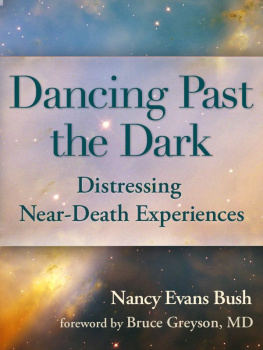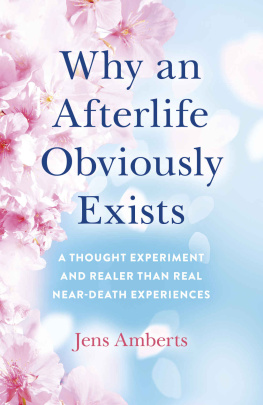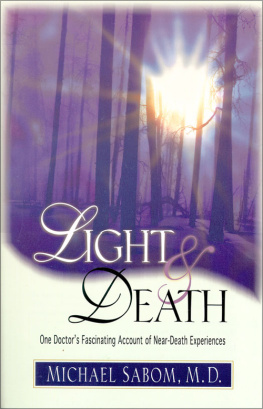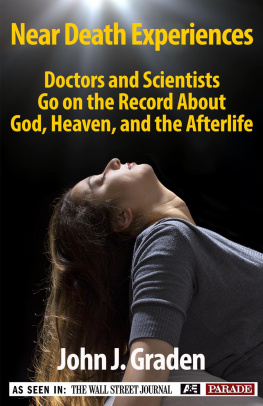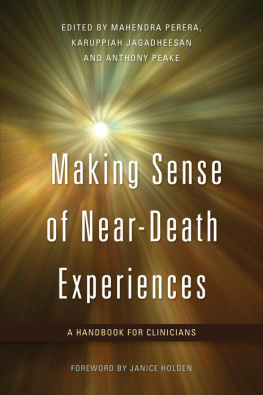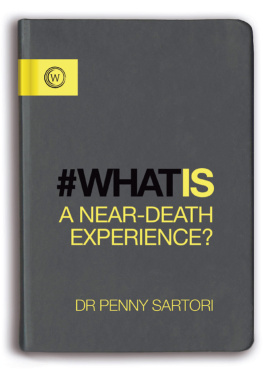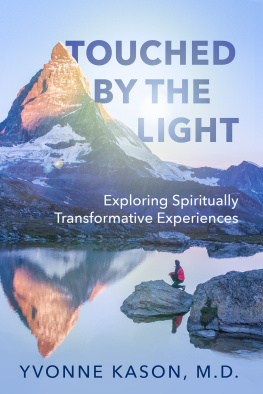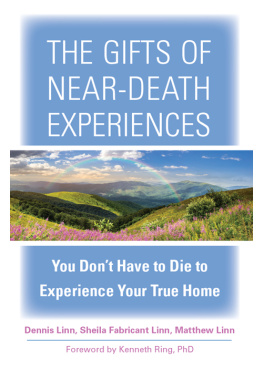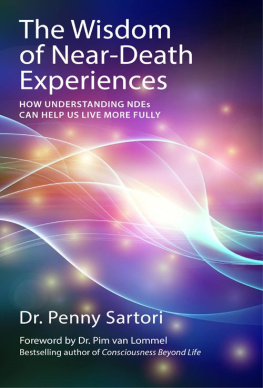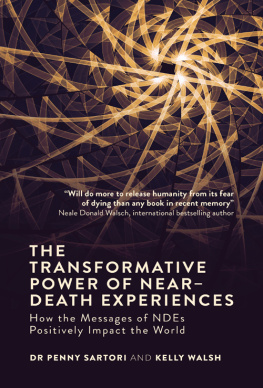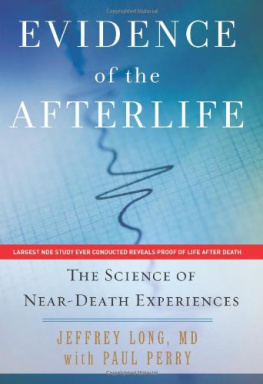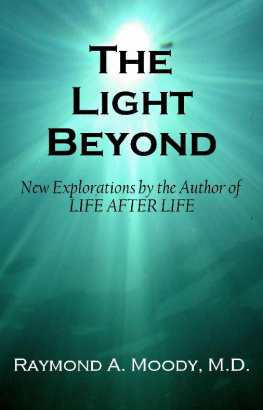DANCING
PAST
THE DARK:
Distressing
Near-Death Experiences
Nancy Evans Bush
Foreword by Bruce Greyson, MD
Copyright 2012 by Nancy Evans Bush
All rights reserved. No part of this book may be used or reproduced in any manner whatsoever without written permission from the author, except for brief quotations in critical articles and reviews, and fair use quotations in academic papers and other publications.
Includes a bibliography and index.
Publisher, Nancy Evans Bush
Thanks to the International Association for Near-Death Studies for permission to use material from the Journal of Near-Death Studies . http://www.iands.org
Mark Nepos poem Upon Seeking Tu Fu as a Guide is used by permission of CavanKerry Press, Ltd., Fort Lee, New Jersey.
Cover photograph of the Dumbbell Nebula, M27, from NASA and the Hubble Heritage Team (STScl/AURA), and C.R. ODell (Vanderbilt University)
Cover design by WebsiteGeographer,
http://www.websitegeographer.com
Index by Wordmaps,
http://wordmapsindexing.com
Formatting by eBook Architects,
http://ebookarchitects.com/
Distribution by BookBaby
This book has a website, containing the Dancing Past the Dark blog, additional information, related articles, and contact information for the author. You are invited to visit: http://dancingpastthedark.com .
NOTE: This ebook contains an index. To go to the full index, please To see a particular section of the index, use the alphabet letter links below. To access these links while reading the text, use the table of contents icon on your eReader to return to this note.
CONTENTS
Dedicated to my parents, the Rev. Dr. Arthur Walwyn Evans and Mildred Pile Evans;and, through them, toBishop William and Catherine Morgan,the Rev. Dr. Morris Owen and Catherine Daniels Evans,John and Mary Powell Milton, andW. Clyde and Connie Duggins Pile A cloud of witnesses
FOREWORD
Some 50 years ago, Nancy Evans Bush had a terrifying experience that jettisoned the world as she knew it. While giving birth to her second child, in what had seemed to be a normal pregnancy, she left her body and experienced a confrontation with soulless entities who conveyed the message that her whole life had been imagined, that nothing she knew and loved existed outside her imagination. There was at that time no public awareness of, or even a name for, such an experience, and so the despair that followed that experience remained locked inside her for decades, a grief she dared not share with anyone else. The truth was too horrible to reveal to others, and besides, those others didnt really exist, anyway. So that gut-wrenching experience remained her terrible secret.
Some 20 years later, desperate for a job, she answered a classified ad in the Sunday Hartford Courant for a temporary position as office manager for a start-up nonprofit housed at the University of Connecticut. That temporary position turned into a career working for the International Association for Near-Death Studies, eventually serving as its President and on its Board of Directors. In those first days as office manager for the organization, in a small, windowless room in the Universitys Psychology Department, Bush daily fielded telephone calls that often began, I hope you wont think Im crazy, but....
It was frightening enough for people who had blissful near-death experiences to speak about them in public; but it was unimaginably more difficult for the minority whose experiences were not blissful, but dreadful. Eventually, as awareness of near-death experiences spread throughout our culture, audiences yearned to hear about blissful reunions with deceased loved ones in heavenly realms. But no one wanted to hear (or talk) about the Other Kind. The problem with that denial is that we will never understand distressing experience by running from them, but only by getting to know them.
A major obstacle for people who have had distressing near-death experiences has been the almost complete absence of any helpful information about such events, from simple facts about how common they are and who has them, to what they might mean and how to cope with them. Dancing Past the Dark is the first comprehensive look at these experiences and at how we regard them, both collectively and individually. More importantly, this book is the first effective guide to understanding, living with, and learning from these experiences.
The topic of near-death experiences tends to evoke knee-jerk responses from many people desperately wedded to a particular way of seeing the world. Materialists tend to dismiss these profound events as meaningless hallucinations, whereas New Age spiritualists tend to sugar-coat them as encounters with a divine higher self. Somewhere in between, the work of the world goes on, and that is where you will find Nancy Evans Bush, trying to make sense of these experiences that defy facile explanation but cannot be ignored.
Bush starts from the reality that there can be no light without dark, no dark without light. From that truism, she shows that blissful and distressing experiences are different facets of the same underlying reality. As she puts it, both the heights of spiritual experience and the depths lie within the same mystery. Reality is both less than what we think it is, and more. Bush reminds us that every enduring faith tradition describes spiritual quests involving confrontations with darkness as well as light, adversity and suffering as pathways to transformation. These quests may be frightening and painful and agonizing, but they are trials rather than punishments, and they may lead to invaluable spiritual gifts. They may not be gifts we expected, but we are never diminished by them.
Dancing Past the Dark progresses from the basic facts of distressing NDEs what they are like, who has them, how they affect us; through our common attitudes toward them our cultural ideas, beliefs, and fears; to what they mean the challenges of understanding them and various ways of approaching and learning from them. Bush provides a clear rationale for treating distressing experiences as opportunities for growth, and concrete, practical suggestions for how to do that.
Nancy Evans Bush has spent a half century coming to terms with her own distressing experience. This book brings together the insights she came up with through her own personal struggle, her masters degree in pastoral ministry, and her wide reading of the worlds literature: not authoritarian answers, but practical advice that you can try out for yourself. She writes with simple clarity, and with the humility, authority, and compassion of someone who has been there, a veteran who has walked the walk for 50 years and knows the route well.
Although this book was written by a person who has had a distressing near-death experience, it is not by any means a book just for them. This is a book for anyone who aspires to face the totality of the world in which we live. All of us have experiences for which we are unprepared, all of us at one point or another face frightening or distressing experiences, and all of us sooner or later need to master the art of dancing past the dark.
Bruce Greyson, M.D.
Chester F. Carlson Professor of Psychiatry &
Neurobehavioral Sciences
Director, Division of Perceptual Studies
University of Virginia School of Medicine,
Charlottesville, VA
INTRODUCTION
Over the years since 1975, when the modern world discovered near-death experiences, countless audiences have gathered to hear about these blissful experiences and their rapturous conclusions. Time and again, there has been the hush of a roomful of people bound together in hope and longing that these accounts might be truethat something like heaven may be waiting when we die. And there is a moment when a single person asks a cautious question: I wonder... Is there ...you know... is there the other kind of experience? And the audience holds its breath.

